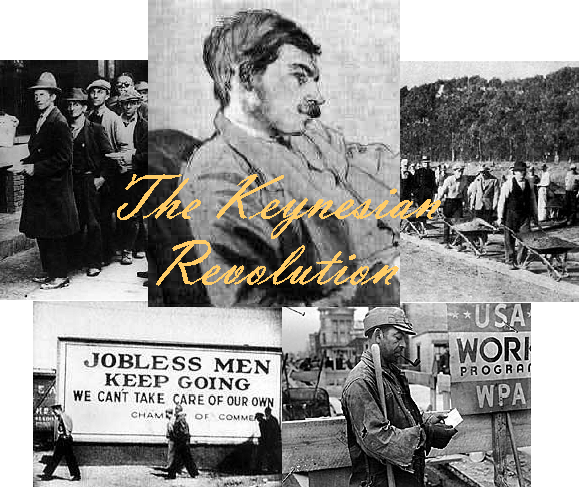
"I believe myself to be writing a book on economic theory which will largely revolutionize -- not, I suppose, at once, but in the course of the next ten years -- the way the world thinks about economic problems"
(John Maynard Keynes, Letter to G.B. Shaw, January 1, 1935)
"Those, who are strongly wedded to what I shall call "the classical theory", will fluctuate, I expect, between a belief that I am quite wrong and a belief that I am saying nothing new. It is for others to determine if either of these or the third alternative is right."
(John Maynard Keynes, The General Theory, 1936: p.v)
"There are also, I should admit, forces which one might fairly well call automatic which operate under any normal monetary system in the direction of restoring a long-run equilibrium between saving and investment. The point which I cast into doubt - though the contrary is generally believed - is whether these `automatic' forces will... tend to bring about not only an equilibrium between saving and investment but also an optimum level of production."
(John Maynard Keynes, Collected Writings, Vol. 13, 1973: p.395)
"The impression of Keynes that one gains [from the Keynesians] is that of a Delphic oracle, half-hidden in billowing fumes, mouthing earth-shattering profundities whilst in a senseless trance -- an oracle revered for his powers, to be sure, but not worthy of the same respect as that accorded to the High Priests whose function it is to interpret the revelations."
(Axel Leijonhufvud, On Keynesian Economics and the Economics of Keynes, 1968: p.35)
"After the war, Keynes's theory was accepted as a new orthodoxy without the old one being rethought. In modern text-books, the pendulum still swings, tending toward its equilibrium point. Market forces allocate given factors of production between different uses, investment is a sacrifice of present consumption, and the rate of interest measures society's discount of the future. All the slogans are repeated unchanged. How has this trick been worked?"
(Joan Robinson, 1979, Collected Economic Papers, Vol. V, p.172)
"The "Keynesian revolution" went off at half-cock...The equilibrists, therefore, did not know they were beaten; or rather...they did not know that they had been challenged. They thought that what Keynes had said could be absorbed into their equilibrium systems; all that was needed was that the scope of their equilibrium systems should be extended. As we know, there has been a lot of extension, a vast amount of extension; what I am saying is that it has never quite got to the point....I must say that that diagram [IS-LM] is now much less popular with me than I think it still is with many other people. It reduces the General Theory to equilibrium economics; it is not really in time. That, of course, is why it has done so well."
(John Hicks, "Time in Economics", in Evolution, Welfare and Time in Economics, 1976: p,289-90)
All rights reserved, Gonšalo L. Fonseca